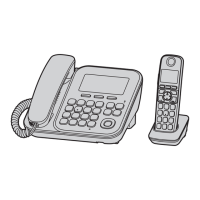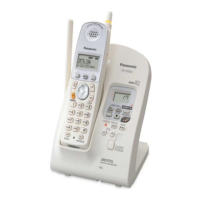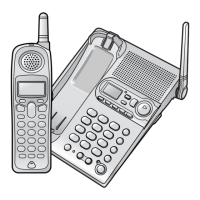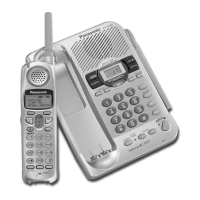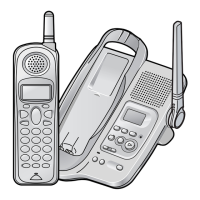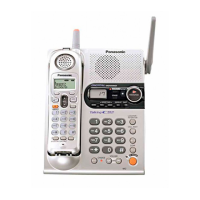7
KX-TG2873BXS/KX-TGA280BXS
4 Technical Descriptions
4.1. FHSS Description
4.1.1. Frequency
The frequency range of 2.401 GHz - 2.482 GHz is used. Transmitting and receiving channel between Base Unit and Cordless
Handset is same frequency. Refer to Frequency Table (P.66).
4.1.2. FHSS (Frequency Hopping Spread Spectrum)
This telephone is using an IC chip which has similar specification to WDCT (World Digital Cordless Telephone) and is the tele-
phone system that can use multiple portable unit simultaneously. The explanation of this system is mentioned below. This sys-
tem uses a Time Division Multiple Access/Time Division Duplex (TDMA/TDD) scheme:
transmitting and receiving frequencies of the Base Unit and Cordless Handset are shared in the same frequency. The construc-
tion of RX/TX frequency data is shown below. It consists of 6 slots from the Base Unit to the Cordless Handset, and 6 slots from
the Handset to the Base Unit, total 12 slots in 10ms. By this slot system, simultaneous air link and communication between 6
Cordless Handset and the Base Unit can be realized. One communication between Cordless Handset and the Base Unit is
done by one slot from the Base Unit to Cordless Handset, and another slot from Cordless Handset to the Base Unit.
DSS makes spectrum spread by multiplying carrier signal by PN code. The purpose to make spectrum spread is to reduce
power density per time and per band. On the other hand, FHSS makes spectrum spread by changing channel every 10ms
according to Hopping table. Also the purpose to make spectrum spread is to reduce power density per time andper band.
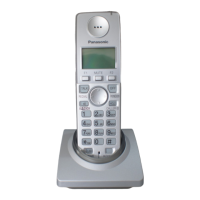
